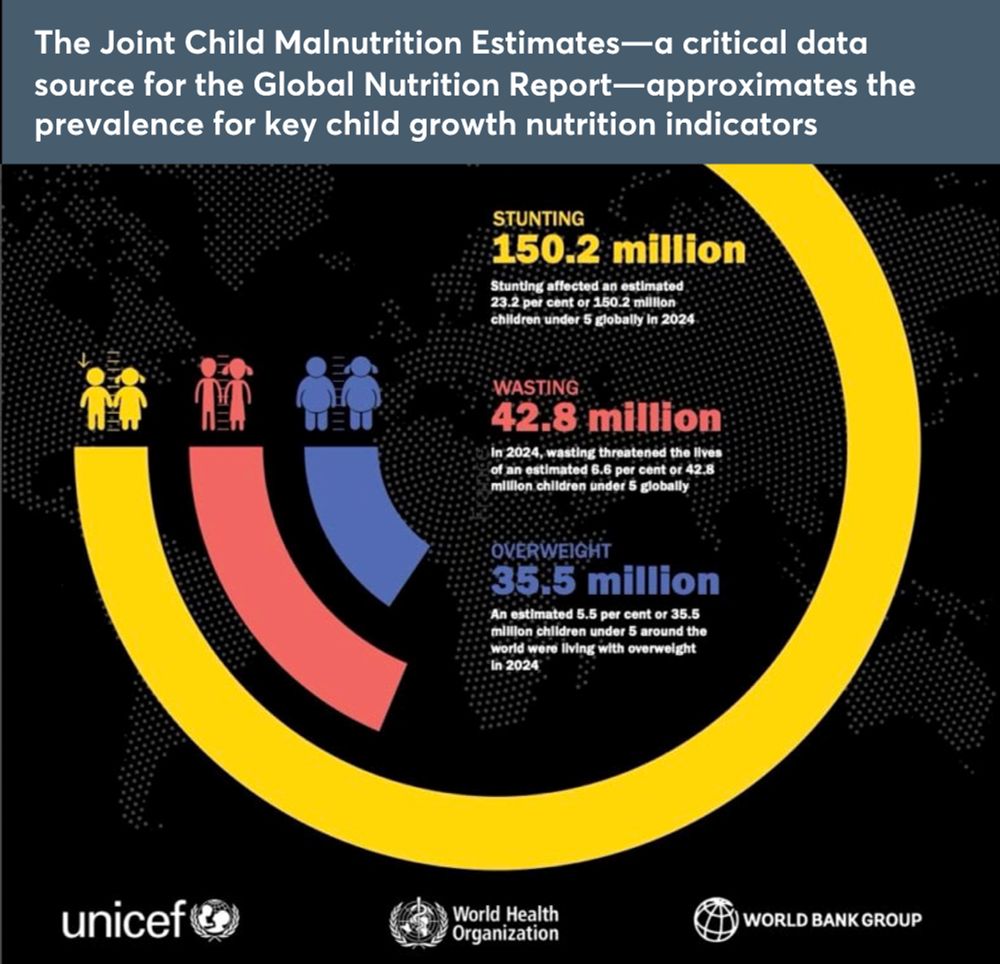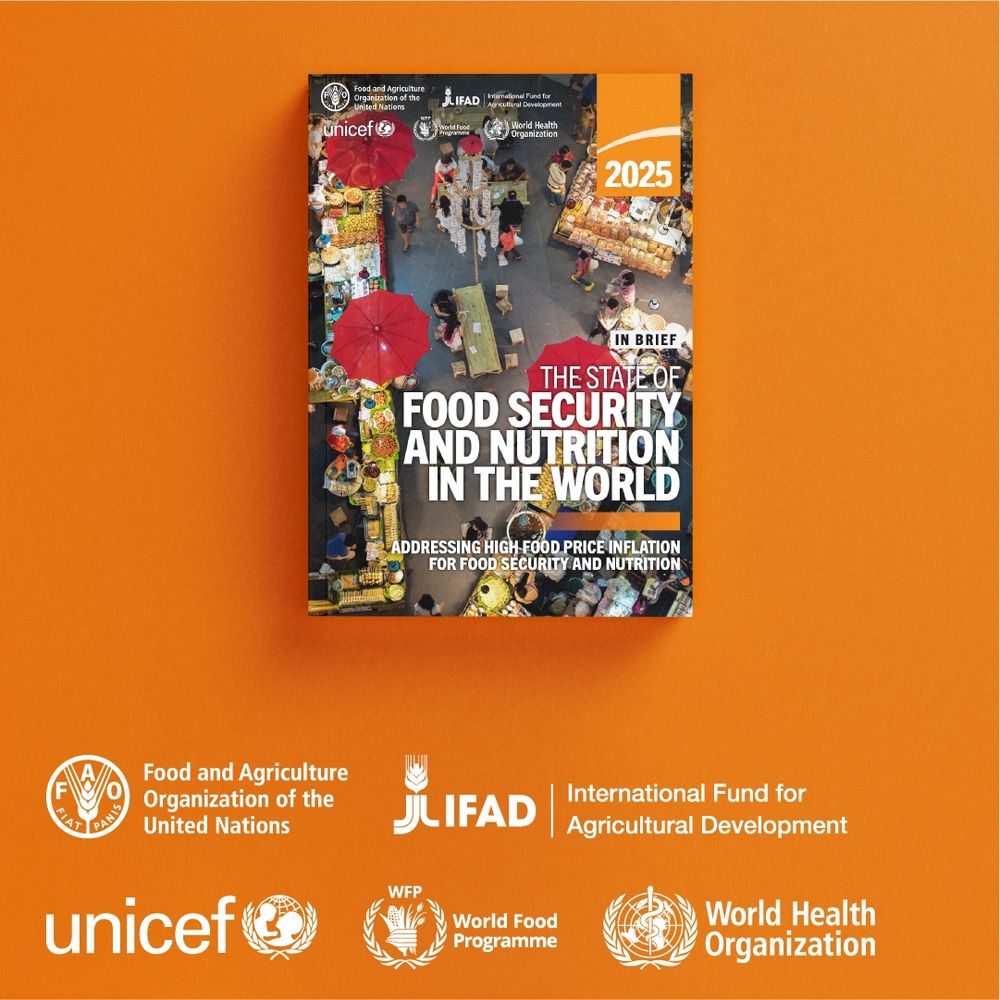We are SO excited about this supplement. Out now!
12.09.2025 01:59 — 👍 0 🔁 1 💬 0 📌 0

A bar chart showing the prevalence of anemia among high-risk groups in various income levels of countries for the year 2019.
Anemia occurs when there is a deficiency of healthy red blood cells or hemoglobin.
The chart is divided into four income categories: low-income, lower-middle-income, upper-middle-income, and high-income countries. Each category lists three groups: children, pregnant women, and women of reproductive age, with percentages representing the prevalence of anemia in each group.
In low-income countries, the percentages are:
- Children: 59%
- Pregnant women: 42%
- Women of reproductive age: 39%
In lower-middle-income countries:
- Children: 51%
- Pregnant women: 46%
- Women of reproductive age: 44%
For upper-middle-income countries:
- Children: 24%
- Pregnant women: 25%
- Women of reproductive age: 19%
In high-income countries:
- Children: 14%
- Pregnant women: 18%
- Women of reproductive age: 15%
Data source: WHO via World Bank (2025)
In many countries, more than half of children and pregnant women are anemic
08.09.2025 11:52 — 👍 30 🔁 10 💬 2 📌 0

Sage Journals: Discover world-class research
Subscription and open access journals from Sage, the world's leading independent academic publisher.
Our supplement on “Interventions on fruit & vegetable intake in low, middle and high-income countries: a global perspective” is now available in @fnbjournal.bsky.social
journals.sagepub.com/toc/fnba/46/...
#nutrition #health #foodsystems
@ifpri.org
03.09.2025 15:15 — 👍 3 🔁 0 💬 0 📌 1

Check out the just-published entire set of papers of the Lancet Haematology Commission: shorturl.at/fgnrg
There is also a shnazzy infographic that summarizes the core paper, “Getting back on track to meet global anemia reduction targets: a Lancet Hematology Commission.” shorturl.at/kj7uu
27.08.2025 11:00 — 👍 4 🔁 1 💬 0 📌 0

Newly released estimates from @who.int @unicef.org & #WorldBank show faltering progress in ending childhood #malnutrition
Continued access to robust data like this ensures decision makers are held accountable to sustain & advance progress for millions of children data.unicef.org/resources/jme/
05.08.2025 18:42 — 👍 2 🔁 4 💬 0 📌 0

How many people faced hunger in 2024?
Latest data is available in #SOFI2025👇
The State of Food Security and Nutrition in the World 2024: Addressing high food price inflation for food security and nutrition
📙Download YOUR copy of the In Brief report👉 doi.org/10.4060/cd60...
28.07.2025 21:25 — 👍 11 🔁 8 💬 0 📌 1

Sage Journals: Discover world-class research
Subscription and open access journals from Sage, the world's leading independent academic publisher.
What intervention strategies and approaches most effectively increase fruit and vegetable intakes in high-, middle- and low-income countries? Read our new scoping review in @fnbjournal.bsky.social
journals.sagepub.com/doi/10.1177/...
@ifpri.org
#nutrition #health #foodsystems
23.07.2025 16:29 — 👍 1 🔁 1 💬 0 📌 0
Evidence for micronutrients other than iron or anaemia was extremely limited.
Some recommendations for future research are highlighted in the paper.
#nutrition #childdevelopment #ECD #nurturingcare
17.06.2025 17:00 — 👍 2 🔁 0 💬 0 📌 0
There was very limited evidence from intervention studies and findings were inconsistent but suggest that nutritional interventions targeting undernourished caregivers could potentially have a positive impact on caregiving behaviours.
17.06.2025 17:00 — 👍 2 🔁 0 💬 1 📌 0
Suboptimal caregiver dietary intakes/quality, food insecurity, caregiver under- and overnutrition, anaemia and poor vitamin B6 status were quite consistently associated with less responsive caregiving and less engagement in early learning opportunities in observational studies.
17.06.2025 17:00 — 👍 0 🔁 0 💬 1 📌 0
This presents valuable opportunities to integrate maternal psychosocial wellbeing (including mental health & safety & security) and nurturing care (stimulation & responsive caregiving) into existing IYCF programmes that could benefit children’s dietary intakes, growth and development.
20.05.2025 08:17 — 👍 2 🔁 0 💬 0 📌 0
Mothers in 🇲🇼 who reported more depressive symptoms at 1 year postpartum were less likely to continue breastfeeding at around 1 year.
Social support was not associated with child feeding practices in either setting.
20.05.2025 08:17 — 👍 0 🔁 0 💬 1 📌 0
Mothers in 🇿🇦 who reported more psychosocial stimulation in the home (i.e. more books, toys, caregiver play activities with children) fed their children more diverse diets.
20.05.2025 08:17 — 👍 0 🔁 0 💬 1 📌 0
🔥JUST PUBLISHED
Few studies have explored maternal psychosocial predictors of complementary feeding & continued breastfeeding.
We report important findings related to intimate partner violence, stimulation in the home & mental health with potential policy & programme implications.
👇 A short 🧵 & 🔗
20.05.2025 08:17 — 👍 2 🔁 0 💬 1 📌 0

Every $1 spent on early childhood nutrition generates a $23 return.
By contrast, where there is malnutrition of any form, disease follows close behind:
-undernutrition is an underlying factor in almost half of deaths in children <5
-over 1 billion adults are living with obesity & diet-related NCDs
29.03.2025 17:02 — 👍 19 🔁 10 💬 0 📌 0
Minimum dietary diversity (MDD) is now an official SDG indicator. A big step forward in measuring and improving diet quality and reducing malnutrition globally.
#nutrition
11.03.2025 08:50 — 👍 2 🔁 0 💬 0 📌 0
Nutrition education was the most common intervention. Social protection, agricultural, environment restructuring and multicomponent interventions were limited.
The second paper in this supplement (forthcoming!) will evaluate the effectiveness of these interventions on F&V intakes. Stay tuned!
05.03.2025 16:46 — 👍 0 🔁 0 💬 0 📌 0
Only about one quarter of the interventions conducted follow-up assessments to determine if the impacts on F&V intake were sustained after the intervention ended. Future research should incorporate follow-up evaluations to better understand the long-term effects and sustainability on F&V intakes.
05.03.2025 16:46 — 👍 0 🔁 0 💬 1 📌 0
Most of the research targeted adults, school-age children and children <5 yrs. More research is needed among underrepresented population groups, particularly adolescents, pregnant and lactating women and older adults.
05.03.2025 16:46 — 👍 0 🔁 0 💬 1 📌 0

Most interventions were implemented in high-income countries. Data were especially limited from Southeast Asia, South America, the Caribbean and sub-Saharan Africa. More research from LMICs and underrepresented regions could provide insights into how best to improve diets of people living in LMICs.
05.03.2025 16:46 — 👍 1 🔁 0 💬 1 📌 0

🚨NEW PAPER🚨 We undertook a mammoth review of interventions evaluating impacts on fruit & veg intake as part of @ifpri.org FRESH project. Our first paper looks at the evidence based & knowledge gaps.
🔗 journals.sagepub.com/doi/10.1177/...
What did we find? A 🧵
#nutrition #health #foodsystems
05.03.2025 16:46 — 👍 2 🔁 0 💬 1 📌 1
I would highly recommend this @nihr.bsky.social grant writing masterclass 👇 I found it extremely helpful last year and useful for anyone putting in an NIHR grant (or others) in the near future.
04.03.2025 15:08 — 👍 0 🔁 0 💬 0 📌 0
The shocks to the global nutrition system should be a concern to nutrition scientists and nutrition advocates everywhere. Please read and share our perspective published open access in AJCN today. 👇
20.02.2025 23:15 — 👍 0 🔁 3 💬 0 📌 0
We found across all population & socioeconomic groups, diets lacked diversity, F&V intakes were low and under- & overnutrition are persisting challenges. Notably, there were limited studies evaluating interventions aimed at improving F&V intake in the Philippines which are urgently needed.
#NutSky
16.12.2024 16:29 — 👍 3 🔁 1 💬 0 📌 0
Our team works with the academic community and external collaborators to: advance new research initiatives, facilitate cross-sector partnerships, support bid development, elevate research outputs, fuel interdisciplinary research, and more
Independent global health news written by experienced journalists. Non-profit media company with HQ in Geneva, Switzerland.
Sign-up for daily email news alerts: http://healthpolicy-watch.news
An interdisciplinary #OpenAccess journal publishing research, review and comment on #Planetaryhealth #Environment, #SustainableDevelopment, and #SDGs.
🌐 thelancet.com/journals/lanplh/home
Assistant Professor at New York University 🌎 Early childhood development; violence against children; climate change; policy and intervention
cuartaslab.com 🌱
Senior Editor at The Lancet Obstetric, Gynaecology, and Women's Health, views are my own
Advancing #ChildrensRights through interdisciplinary and child-centred research, evidence-based advocacy, and education. An applied research unit of the University of Cape Town. ci.uct.ac.za | uct.ac.za
Lecturer at University of Bristol & member of Nutrition and Behaviour Unit. Big passion for 🥗🥙, looking at kids’ eating behaviour and how parents make decisions about food for their kids, with a side of helping families shift to more sustainable diets 🫘🍄🌱
SRCD advances the developmental sciences and promotes the use of developmental research to improve human lives. #ChildDevelopment Tweets/RT≠endorsement
We believe that everyone has the right to a healthy life, so we research solutions to some of the world's biggest health challenges, making a real difference to people’s health, particularly those facing the most barriers.
www.georgeinstitute.org
Liverpool Interdisciplinary Neuroscience Centre
Original thinking, real world impact
https://linktr.ee/livuniresearch
Professor at Tufts University, but all posts and views are my own. Food policy, nutrition, humanitarian action, international development, economics, public health, science.
Interdisciplinary research to build resilience to floods and extreme heat in the maternal and child health system in climate affected regions. Website: https://www.lshtm.ac.uk/research/centres-projects-groups/reach
Research Fellow in nutrition and public health
I'm a scientist studying resilience w/ children & families who experience adversity, like homelessness & loss.
RG: www.researchgate.net/profile/J-J-Cutuli/publications
Substack: https://joewillard.substack.com/
The NIHR Policy Research Unit in Policy Innovation and Evaluation (PIRU) is an independent team of researchers from LSHTM, LSE and University of Glasgow aiming to improve UK health and social care policymaking.
We are a cross-faculty team of researchers at the London School of Hygiene & Tropical Medicine focused on supporting and improving the health of everyone affected by #HumanitarianCrisis
🔗 lshtm.ac.uk/crisescentre
Bringing together data science expertise across LSHTM to tackle the biggest global health problems.
Senior Research Fellow at the Center for Global Development
https://www.cgdev.org/expert/lee-crawfurd












